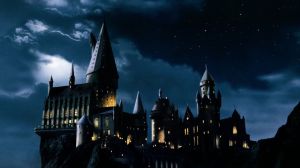Horror films often draw inspiration from real-life situations and scenarios, oftentimes inspiring fear in the viewer the next time they experience anything familiar to the terrifying journey. One of the latest horror films to find success by exploring a popular hobby is Escape Room, imagining a deadly scenario in which participants are forced to solve a series of deadly puzzles if they hope to earn a reward, in addition to leaving in one piece.
Videos by ComicBook.com
One viewer who is quite familiar with the realities of escape rooms is Seth Wolfson, Creative Director and Game Designer at Hourglass Escapes in Seattle, Washington. In addition to being a horror film fanatic, he has years of experience creating escape rooms that aim to both thrill and challenge their participants, putting their problem-solving skills to the test.
The open-ended nature of Escape Room‘s finale and its box office return of $115 million worldwide on a reported budget of less than $10 million could earn the film a sequel, but is there any truth to what the filmmakers depicted of the experience? Comicbook.com spoke with Wolfson to get to the bottom of what the film got right and got wrong about the rooms, which continue to grow in popularity.
Escape Rooms 101

Haunted houses and scavengers hunts are ingrained in society, though when audiences saw the trailer for Escape Room, it’s possible that no one knew how the premise set itself apart from other horror films. Wolfson gave us a quick description of what viewers should know about the experience.
“In an escape room, you usually, and should, have a goal or a mystery to solve, which might be to escape the room, or to help somebody escape, or stop a virus, or break a curse, or what-have-you,” Wolfson explained. “You usually have an hour, it varies, to solve a mystery, or complete a mission, or a goal, through the use of puzzles and props, all in a self-contained environment.”
He added, “I usually tell people it’s like they’re in a movie, but you’re the main star. Reminding them it’s like in The Goonies, when they play the piano, to then do things in the pirate ship.”
Wolfson also cited the National Treasure series as an example, as the film’s narrative required the characters to see everyday objects and environments from a new perspective in hopes of unlocking clues that would lead to the discovery of historic artifacts.
Exciting Rewards
While horror films like Saw and Cube have seen victims become unwitting participants in potentially fatal situations, Escape Room lures characters to the puzzle with the incentive of $10,000 if they can solve the challenge. Wolfson pointed out that, in most cases, the biggest reward is the experience itself.
“It’s the enjoyment. People ask if there are prizes in some rooms,” Wolfson noted. “The [escape room’s owner usually] says, ‘Well, you get the enjoyment of winning, or playing the game, being with your friends, or working as a team.’ Usually, there’s no prizes.”
In fact, offering a large reward can sometimes have a psychological impact on the participants that makes it harder for them to succeed. The designer recalled studies which demonstrate participants who are offered $5 to accomplish a task are more likely to complete the objective than groups offered $100, with the psychological pressure of the reward becoming an obstacle.
“Even if you offered a free game if you got out of the room in under a certain amount of time, it actually makes it harder for them to do that, because they’re thinking about that goal, and not the puzzles at hand,” Wolfson admitted.
Room After Room

While most actual escape rooms last roughly an hour, Escape Room depicted a series of different interconnected rooms to prolong the experience. As escape rooms become more popular, Wolfson has witnessed the experiences growing more elaborate, sometimes spanning multiple rooms or even days.
“There is one place in Europe that, I believe, is like a prison, and I think that might even be a multi-day experience,” Wolfson explained. “There are definitely places like that across the world, where it’s more than just an hour, and it’s a multi-day thing. I don’t have a good handle on what they’re called, but most of them tend to be just an hour to 70 minutes. Some are 90-minutes.”
He added, “I think there is an escape room hotel somewhere, where you don’t stay there, but every room is a little different.”
“I would say it’s rare at this point to have single-room games. We opened pretty early, so, for us, it was what we did,” the designer continued. “As we get into things like [the upcoming official Evil Dead 2: Dead by Dawn escape room], we do multi-room games, and I would say that’s pretty common.”
As escape rooms across the world grow more popular, it allows them to find new experiences to offer participants.
“It’s little bit of magic every time you open something new, and there’s a new world to move through,” Wolfson shared. “And, in some places, it’s just a basement that you’re getting into. Some places, you’re walking into another universe.”
Personal Significance
One of the inventions of the film that is far from reality is that the rooms relate specifically to each character’s backstory with various clues having personal significance.
“We find you never know who’s going to play. It could be a group of 12-year-olds. It could be a group of 40-year-olds [who work in an office together] doing team building,” Wolfson claimed. “But, the thing that the movie got right with that, is that every room, and everything, did connect to some sort of narrative, whether it was their personal narrative, or the narrative of the game. So that was kind of cool, and for a movie plot point, I thought that was fun.”
Building Connections

When the film starts, all of the characters are strangers to one another, leading to accusations about each other being responsible for what’s happening. As they get further into the ordeal, they begin building stronger connections with one another. While the idea of participating in such an engaging activity with strangers could sound intimidating to some, Wolfson revealed that, in his experience, strangers often build stronger connections within the game due to the shared experiences, both in the frustrations and excitement of the puzzle mechanics.
“If it’s all people that know each other, it’s kind of a crapshoot. It depends on their personalities, but they will have a lot of fun together,” the designer shared. “If it’s two groups of strangers, like, you get two pairs of people signed up for a game, and they know other people can join…say it’s a 10-person room, so they know they’re going to be with strangers and they’re okay with that, then sometimes they leave and go have a beer together afterwards together.”
Embarking on an escape room adventure alone might sound too intense for some attendees, yet Wolfson explained how it’s all about an individual’s attitude when it comes to whether they’ll find success.
“Recently we had a guy…he played two or three of our games back-to-back, all with different groups, but he had a good personality, so he worked well with these three different groups, of three different types of people, all different walks of life,” Wolfson confessed. “So, it was three different styles of groups, and he just clicked with them. And, he didn’t just do stuff on his own. He worked with them, because he had done hundreds of rooms by himself, I think, so he knew how to do that.”
Scaring Off Participants
In Escape Room, multiple characters meet their demise, which could deter potential participants from ever signing up for such an experience. Wolfson revealed that, while some escape room designers are disappointed to see their livelihood get a bad reputation, others are excited to see their interests represented in a major film.
“On a lot of the professional groups, there’s two camps. They’re like, ‘This is horrible for our industry. Everybody’s going to think they’re going die, and they’re not going to want to come to us,’” Wolfson shared. “Then, there’s other people like me, who are like, ‘This is awesome. People are going to realize this is a movie and this is just to draw more attention.’”
Escape Room isn’t the first film to explore the premise, though the major studio behind its production resulted in a more compelling final product.
“It was the first one that didn’t look like a low-budget, straight-to-video movie, in my opinion,” explained the designer. “You could tell it was well-made, whether it was going to be good or bad. I thought it looked kind of fun, so going into it I knew what to expect. I had an idea of what to expect.”
He continued, “I thought it was pretty tense, the whole movie. It was really well-paced. All the details and the music. Every little thing, I think held that, so we went, and we just had a fun time.”
Nearly Replicates the Actual Experience

One of the elements of Escape Room that stood out to Wolfson is that the way each puzzle was crafted, audiences themselves could potentially put clues together to answer the challenges the characters faced, similar to what a viewer would experience in an actual escape room.
“There are a few puzzles you can solve as an audience member,” Wolfson divulged. “And that was fun, because we all were like, whispering [the answers to one another]. That put us in the movie in a different way, and gave us a little win, in our heads. Little things like that, was probably some of the genius moments in the movie, for the escape room people, and just people in general, because now they felt like they were the smartest person in the movie theater.”
He added, “And you’re thinking nobody else was going to get that, in this movie theater. I didn’t hear anybody saying it. Everybody’s just quietly [guessing], which is great. That was some of the stuff they got right. I think they got as much right as they could, in a lot of places, with doing that kind of movie.”
Stay tuned for details on the future of the Escape Room franchise, and check out Hourglass Escapes’ website for their various experiences, which includes an Evil Dead 2 escape room debuting this summer.








